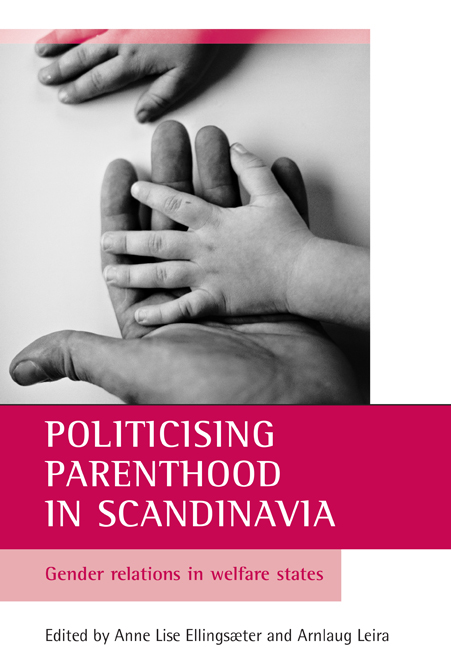Book contents
- Frontmatter
- Contents
- List of boxes, figures and tables
- Acknowledgements
- List of contributors
- one Introduction: politicising parenthood in Scandinavia
- Part One Politicising parenthood – legacies and challenges
- Part Two Gender equality and parental choice in welfare state redesign
- Part Three Work, family and the welfare state: redefining family models
- Index
three - Nordic fertility patterns: compatible with gender equality?
Published online by Cambridge University Press: 15 January 2022
- Frontmatter
- Contents
- List of boxes, figures and tables
- Acknowledgements
- List of contributors
- one Introduction: politicising parenthood in Scandinavia
- Part One Politicising parenthood – legacies and challenges
- Part Two Gender equality and parental choice in welfare state redesign
- Part Three Work, family and the welfare state: redefining family models
- Index
Summary
Policies of parenthood and fertility
Is there a possible connection between policies of parenthood and fertility? This has been subject to increasing interest over the past decades, both in demographic research and on the political agenda on ageing societies in the western industrialised world. The fertility development of the Nordic countries and the possible effects of the ‘Nordic model of family welfare’ have received considerable attention (UN, 2000a; Demeny, 2003). The Nordic combination of high levels of female labour force participation with relatively high levels of fertility, may suggest that a sustainable level of fertility is compatible with gender equality, and that family policies play an important role in generating this fortunate situation. However, there are reasons to take a critical look at these assumptions. We shall argue that the role of family policies in maintaining high fertility levels is often overstated, and that the present Nordic fertility patterns indicate that a sustainable level of fertility in the long run is dependent on parenthood policies with stronger incentives for gender equality.
Our methodological line of argument is that in order to understand fertility dynamics, one needs to go beyond crude fertility rates. The public debate on fertility is usually based on aggregate fertility indicators – total fertility rates. However, from a demographic perspective, the total fertility rate is a superficial measure of the underlying structural elements of fertility patterns, as they develop over time with subsequent cohorts of women passing through their reproductive period. It is also vital to understand trends among different socioeconomic groups of women, not only different levels of education but also the interplay with different sectors of the labour market.
The focus of our analysis is the relationship between Nordic fertility trends and the corresponding development of parenthood policies in the Nordic countries since 1970. We start with an outline of the analytical framework and the contextual dynamics of the politicising of parenthood processes of the Nordic countries and the development of the total fertility rates of the Nordic countries in a broader comparative perspective. We continue with a presentation of earlier research findings of policy effects on fertility and return to a broader discussion of recent research findings on the fertility dynamics of the Nordic countries.
- Type
- Chapter
- Information
- Politicising Parenthood in ScandinaviaGender Relations in Welfare States, pp. 53 - 76Publisher: Bristol University PressPrint publication year: 2006
- 1
- Cited by



